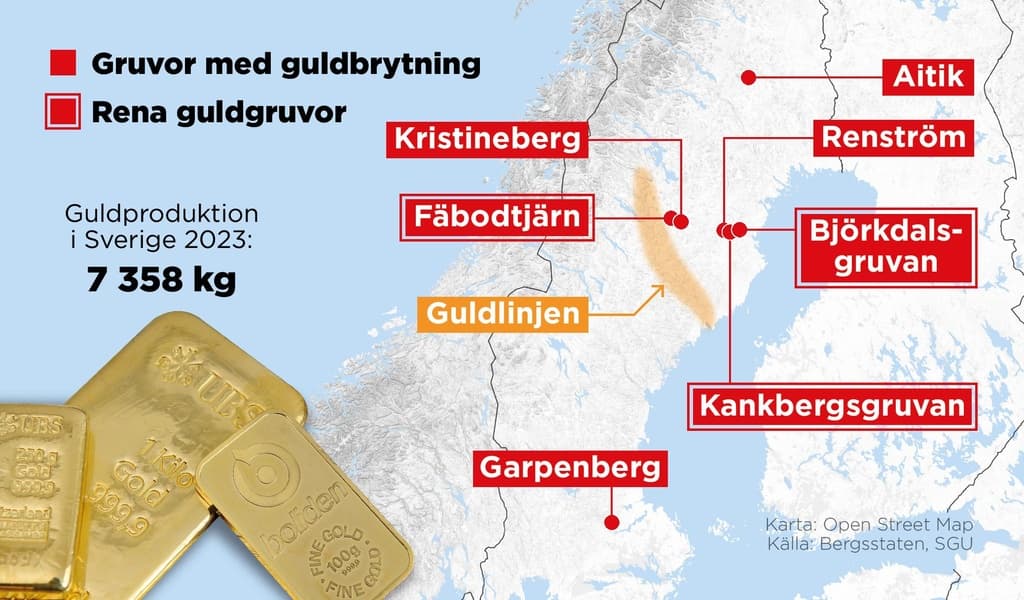The mine in Västerbotten's inland is the first to open in ten years. Iron ore dominates, and Sweden is by far the largest in the EU and is also a fairly major player in the world, although only with one percent of the total.
Several of the Swedish mines also produce gold as a by-product in the production of other ores such as copper, lead, and zinc. But there are also two pure gold mines, including the new Fäbodtjärn and also the Björkdal mine outside Skellefteå, which is operated by a Canadian company. In addition, Boliden has one that refines both gold and tellurium. In total, there are seven mines where gold is extracted, according to the Mining Authority, which is the authority that handles mining permits.
The Gold Line
Some of the gold finds are located more or less along the so-called gold line, where it is estimated that there is most of the precious metal in Sweden, according to Peter Åkerhammar, mining expert at the Geological Survey of Sweden (SGU). This golden line runs from just inside Umeå, in southern Västerbotten, in a northwesterly direction towards Storuman and Sorsele.
Currently, there are just over 500 valid exploration permits for minerals in Sweden, according to the Mining Authority's statistics. The proportion of gold exploration permits out of the total number has remained fairly constant over the past six years. High gold prices have not directly changed this, as project timelines are often very long.
Gold Second Most Common
Copper is the most common metal for the sought permits, where gold comes in second, according to Peter Åkerhammar.
But Sweden is a very small gold player in the world, with only a few tenths of a percent of the total. Annual Swedish production has been around 6-8 tons per year over the past ten years. Globally, around 3,000 tons are extracted annually. In the EU, Sweden accounts for a quarter. Other gold producers in Europe include, for example, Finland, Bulgaria, and Romania.
About half of all gold production in the world goes to the jewelry industry. Then gold is big in the financial world and is used as an investment object by, among others, many central banks.
A certain amount is also used in the electronics industry and, among other things, in dentistry.
Sources: SGU, World Gold Council





